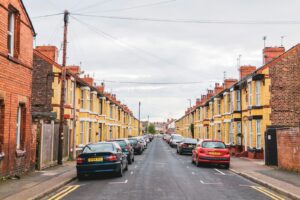Cambridge: to grow or not to grow?
The relationship between growth and the physical change that growth brings is perhaps never starker than in Cambridge, as I found out last week while doing some research exploring this dynamic with stakeholders in the city.
Cambridge is a historic, compact city where residents pride themselves on never being ten minutes cycle away from green countryside, yet the city is bursting at its greenbelt seams. In the midst of one of the most serious recessions the UK has ever seen, and in Cambridge is booming but this growth comes with consequences particularly in terms of land values. Indeed even the lowest house prices are nine times the average wage of £27,000. But once out, the growth genie is difficult to put back in its lamp.
It’s an interesting time to reflect on growth and planning in Cambridge as the city council has just published its issues and options paper, which signals the start of the consultation process for a new local plan which will set out a clear sense of direction for the next 15-20 years. While the national policy context has changed massively, the challenges for Cambridge as an internationally competitive city, remain the same. What is or what should be the role of planning in a place such as Cambridge? Is it about getting out of the way and leaving growth to get on with it, or throwing a drag anchor overboard in an effort to slow things down?
In the 1950s Cambridge had the Holford – Wright Plan which did call for a halt to the city’s growth, encircling it with the green belt and suggesting the city’s population grow no larger than 90,000. The result of this plan was to encourage growth in the outlying towns and which in turn resulted in significant levels of in commuting, rising land values in the city centre and traffic congestion.
The 2006 local plan was the first real attempt to reverse this trend. The 2006 plan identified a number of new strategic growth sites on the periphery of the city to accommodate new neighbourhoods which would enable the city to grow, increasing the supply of housing and improving access. These new sites are currently being built around the city.
The city council’s new local plan consultation process encapsulated succinctly in the issues and options paper explores whether the city should continue to respond to economic growth by allocating new sites for employment and residential development or whether the growth areas originally planned in the 2006 plan and currently being developed, should be allowed to be completed before moving to a new stage of growth. It’s a choice between a ‘steady as she goes’ strategy or a further step change in terms of growing in a way which may change the city’s character still further and perhaps irrevocably
While the importance of economic growth seems axiomatic at a national policy level, almost a universal good, it is interesting to be reminded in a place like Cambridge that growth is a slippery and often difficult concept, not always met with the same enthusiasm among those who have to live with its impacts. There is deep concern in parts of Cambridge about how growth is impacting upon residents’ quality of life a key driver of economic success in the city.
But growth can also be good, not simply because of the jobs and income it brings but the benefits in terms of new services and facilities that result from planning gain even in the midst of public sector austerity, for example, new public libraries are being built in parts of Cambridge because of expected demand from new neighbourhoods.
Perhaps what we are really talking about is not growth but change, inexorable change which, no matter what direction the economy is going in can be managed by using the planning system to provide the opportunities for these debates and arguments to take place.
















Interesting stuff Sarah. The great planning challenge of the day, in my mind, surrounds how we go about planning by economic geographies.
In few places is the importance of this demonstrated more than in Cambridge, where nearly 30,000 of its workers do not live in the local authority district. Conversely, almost half of the resident population of East Cambridgeshire leaves the district to go to work.
The Local Planning system as it is, does not provide an effective mechanism to plan beyond the district boundary, although some joint planning arrangements have sought to do this to a degree.
Cambridge is seeking to manage rapid growth and does not have the physical space for all the residents and business who would like to be there. Nor do the economics allow for this. The district neighbours meanwhile, are keen to have a slice of all that demand.
So there is an answer that could satisfy all parties. Make land allocations at sustainable locations in other districts, linked by efficient transit corridors. There are some – guided bus, some very efficient train links (some less so).
The mechanism for planning like this could have been through regional spatial strategies. With these gone, areas have to put something in the space left behind by the RSS which can bring districts together to plan in this way. Cambs is looking to do this with a Joint Planning Unit. But it is no small challenge!
Of course, the wider issue here is that continuous economic growth in a world with finite resources is just not realistic.